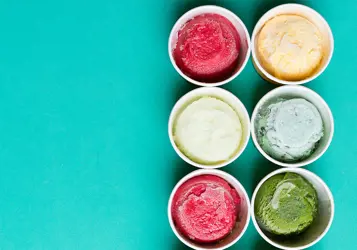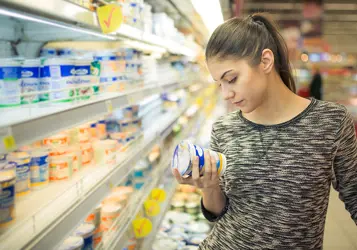The team here at NNB has again put together our annual trend report, revealing the most crucial changes in consumer perception and behaviors.
When we consider whether a trend has the potential to make it onto our Key Trends list, we evaluate it on eight parameters. Things like regulatory changes, consumer trends and any new ingredient technologies coming through. We'll look at whether nutrition science supports the claim made. We look at is what's happening in the marketplace, what the competitive landscape is like. And this all means that year-on-year our Key Trends don't change much as headlines. But what does change is the kind of "subtitles" beneath that, the nuances in execution and development.
Let me share some of the most important ones for 2022.
Less protein battle and nutrient density is emerging
A few years ago, everyone talked about plant-based protein and how it would change the world, and we should all be eating plants. There wasn't much room for dairy protein, and animal proteins were quite old-fashioned. I think the landscape has changed quite a bit on that now. One thing that's come out in the key change for this year is this whole area of nutrient density, and that's a trend on its own.
And it has lots of opportunities for dairy, among other products. It's the idea that consumers want more bang for their buck. We're looking for foods that not only are, for example, low calorie but something that offers a rich nutritional profile per calorie consumed. One thing that's driven that is the US Dietary Guidelines now incorporate this idea of nutrient density. In our 5-Country Study every year we ask consumers their opinions and beliefs on various aspects of health and nutrition. And for the first time this year, we asked them about nutrient density. Surprisingly, on average, 12 percent of consumers already believe that they understand what nutrient-dense means. That is relatively high for a new concept.
There are many ways to positively link nutrient density with health conditions or alleviate health conditions. And, of course, COVID has shone a spotlight on that.
Fat fuels growth
Fat is a big story. It's been news for a few years, but now we really see consumers losing their fear of fat in products, which is excellent from a product developer's point of view. Fat has a great mouthfeel, it can free up an opportunity to reduce sweetness levels, and often you don't have to add as many ingredients as you do if you're taking fat out - it allows for a cleaner ingredient deck. And in terms of appealing to consumers, it's quite easy to appeal to them with a kind of creamy, rich type product. It also appeals to people who are trying to manage their weight. Ketogenic diets are increasingly popular across the globe and are higher in fat than most other diets. The fact that you're on a diet and yet you can still eat something that tastes fantastic and is rich and creamy, that's a message that really resonates with consumers, and we're seeing that kind of product take off now. That fits well with dairy in general. For example, in Marks and Spencer supermarket in the UK, you can find a zero percent fat Greek yogurt and a 10 percent fat version side by side on the shelf, both with the same Eat Well healthy logo. This would have been impossible even three or four years ago because dietary advice was so focused on reducing fat. That's a great story in terms of NPD.
Sustainability is a must
Sustainability is now more a driver of purchase for consumers than ever before, and increasingly consumers are willing to spend money to choose an option that they consider to be more sustainable. The tide is turning, and we can see this, for example, in the meat industry where “grass-fed” has proved to be a marketing message which resonates with consumers and commands a price premium. Grass-fed beef suggests a cattle reared on a smaller farm where the farmer carefully tends and prioritizes the welfare of their animals.
Premiumization push by COVID-19
Consumer´s lives have been so limited for such a long time, and during lockdowns there was so little novelty and variety that many have used that time to experiment with new foods. Data shows that sales of gadgets for the kitchen increased by up to 100 percent in the first lock-down as consumers found that they had the time available to try new things in the kitchen. They've had more time to research ingredients and seek out social media discussion and blogs about novel foods, so they're more educated. They've had more time to experiment, and many have been trading up when it comes to foods in general. For example, they've been buying fine dining restaurant-quality meals to eat at home instead of standard take-aways. Whether that will continue remains to be seen, as we enter a period of economic insecurity, one of the many fallouts from the pandemic. But historically, when we have been through periods of financial trouble, consumers often turn to food as a cheap treat. I expect to see much more of that and premiumization becoming a trend again in the next few years.
Fragmentation is accelerating
The idea of fragmentation of the marketplace for healthy food has developed quite strongly in the last years, and COVID has helped to accelerate that. The food and drink industry is becoming a market of niches, and consumers are more and more researching and forming their own opinions on what they believe is healthy and seeking out products that meet that. One person might decide that high fat is beneficial and seek out high-fat products. Another person might be looking for low carb or seeking out plant-based or choosing to avoid grains, for example. From an NPD point of view, that means that the chances of finding a group of consumers who will be interested enough to buy your product are probably much higher than it was historically - but of course, those groups are likely to be smaller. Successful companies are likely to have an increasingly larger portfolio of products that address the needs of smaller consumer groups.
I hope these few insights can support your strategies and new product development process. I wish you all success in a very turbulent time.
This blog contains material and information intended for B2B customers, suppliers and distributors, and is not intended as information to the final consumers.





















